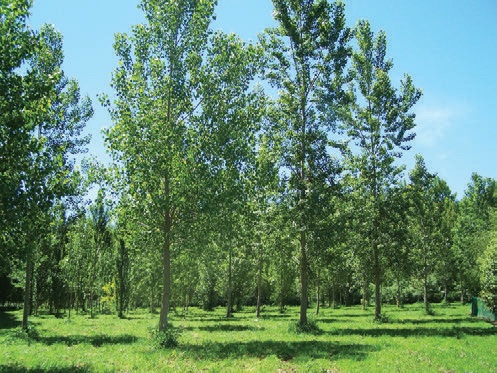Aspendale poplars and more
Bruce Bulloch, New Zealand Tree Grower February 2009.
On Sunday 30 November 2008, members of four branches − Middle Districts, Wellington, Tararua and Wairarapa – gathered at Allan and Lois Wilkinson’s property, south of Levin.
Allan is well known to farm foresters as a poplar breeder for about 30 years at the former Soil Conservation Centre at Aokautere, near Palmerston North. The centre provided research to support the soil conservation work of catchment authorities. After the demise of the Ministry of Works in the late 1980s, the plant materials nursery passed through various permutations to end up with HortResearch. The research programme of Allan, and then his successor Lindsay Fung, have been starved of funding except for a limited amount of support from regional councils.
Base collections
Where will they find the base collections of genetic material to recommence poplar and willow breeding? The answer evident to all present on the day was Allan and Lois Wilkinson’s property.
The Wilkinson’s acquired the 10 hectare property about six years ago. The soil is mostly peat but there are some scarps and elevated knolls to provide a variety of planting sites. To drain the peat Allan and Lois dug out a lake to create a landscape feature and provide raised bunds for planting ornamentals.
The only poplars originally on the property were a row of flevo, now sizable heavily-branched trees with spreading crowns. Allan contrasted the natural form of the flevo with the kawa and veronese poplars he has planted along the drain which joins up with the Manukau drainage scheme, and also with the narrow-crowned crows nest poplar which he developed 23 years ago.
Genetic resource collections on the property include balsam poplars, mostly from inland locations. Another of the collections is of clones of the American cottonwood, Populus deltoides, from different locations. These exhibit different natural characteristics in terms of stem straightness, heavy or lighter branching, spreading or more upright crowns, early development of rough bark, and tolerance of wetter soils, all of which are features used in the poplar breeding and selection. In general the cottonwoods are not tolerant of wet soils but the European black poplar P. nigra and its hybrids are more tolerant.

Various hybrids
There is only one true aspen on the property, the American P. tremuloides. Among the more uncommon poplars are specimens of the Chinese P. cathyana and P. szechuanica. Allan developed a wide range of hybrids from the latter and these have been growing on field sites pending revival of a research programme for their evaluation and selection.
On the willows, Allan’s collections include all the Salix matsudana x S. alba hybrid willows developed for soil conservation and shelter in the 1970s and 1980s and also newer material such as a S. matusadana x S. lasiandra hybrid which is not palatable to possums, and a S. pentandra x S. matsudana hybrid. Allan has both male and female clones of the Chilean willow S. humboltiana, both different from the narrow- crowned upright form used for shelter.
A sequel
A sequel to the meeting between MAF officials and regional council representatives was the announcement of $735,000 funding to the Poplar and Willow Research Collective for a four-year research programme. This is to begin in 2009/10, to be matched by a like sum from regional councils.

 Farm Forestry New Zealand
Farm Forestry New Zealand